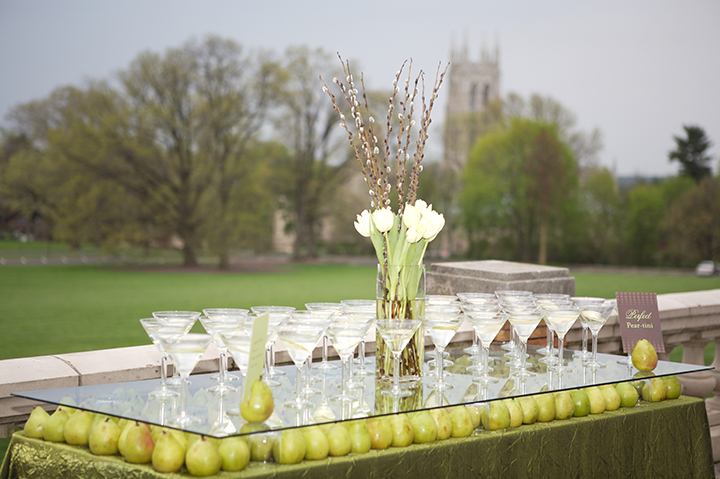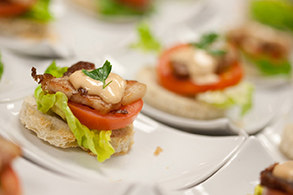With wedding season upon us, caterers and other industry pros are busily tying up loose ends from the off-season and preparing for the increased business. For some, an updated proposal may be on the docket, whether it’s because your products and services have changed or you simply want a fresh start.
Yet, creating proposals is a time-consuming process and one that doesn’t always lead to a new account. Your pitch (and quote) needs to match—and exceed—the expectations set by those of your competitors, but you also need to be smart about when and why you’re creating a new proposal.
“Don’t be too quick to create a proposal for a wedding,” cautions Anthony Lambatos of Footers Catering. “Not all leads are good leads. At Footers, we put a lot of emphasis on qualifying to make sure they are a good fit. Proposals can take a lot of time, so it’s important for our coordinators to spend extra time on the front end getting to know our potential clients before we do a proposal for them.”
Lambatos adds: “In addition to qualifying, we are also building rapport with them that will help us customize that proposal instead of getting their information, a few details about their wedding, and then firing off a canned proposal.”
Indeed, customization is key to a winning proposal, but there are some other considerations to keep in mind as you refresh and refine your documents if you want to win more clients this season.
Registration for Art of Catering Food is now open! Click here and be the first to register!
Include the proper precautions
While a proposal serves as a way to communicate your proposed plan, it’s also a way to set expectations and safeguard your business interests. Many of the relevant disclaimers and clauses can be found online as boilerplate, but it’s worth getting them reviewed by legal counsel (especially in your contract) to ensure everything is lawful and legitimate.
“You must include clauses stating allergies (like tree nuts) are respected, but the environment where food is prepared may not necessarily be nut-free,” says Lon Lane of Lon Lane’s Inspired Occasions. “Also, you need a Consumer Advisory and Allergy Disclaimer: something along the lines of ‘Contains (or may contain) raw or undercooked ingredients — Consuming raw or undercooked meats, poultry, seafood, shellfish, or any eggs may increase your risk of foodborne illness.’ You should also add a confidentiality notice stating that information is not allowed to be shared, which safeguards both parties involved.”

Feastivities Events wedding table. Photo courtesy of Cairnwood McGarvey.
Get creative with the presentation
In many cases, your proposal acts as your first impression — even if you’ve already spoken over email or even met in person, the proposal is what gives them an inside look at how you envision their event. It’s your chance to differentiate yourself from competitors, so give each proposal all you’ve got.
“Don’t be afraid to jazz up your proposals,” states Meryl Snow of Feastivities Events. “Including some photos and custom text goes a long way in engaging potential clients. Share some details and pictures from past events to show your work in action. I’ve found that prospects are far more receptive to a proposal that feels like it was designed with their special event in mind, as opposed to something that seems formulaic as if it goes out to every lead. I even like to give my proposals a name that pops — something like ‘Jessie and Thomas’ Summertime Brunch Soiree’ is going to strike them way more than a generic proposal named ‘Jessie and Thomas’ Wedding.’”
Ensure it is organized and user-friendly
Let’s be real: proposals can be long, especially if you’re including photos and diagrams. Your target client may or may not have the patience or intention to read the whole proposal from start to finish. Perhaps they only care about the cost, or maybe they will only gravitate towards your suggested menu to see what they have to offer. You may not know what your prospect is most interested in, but you can ensure that it is easy for them to find.

Feastivities Events Pork Belly BLT. Photo courtesy of the caterer.
Page numbers and a table of contents are a great addition to a proposal and, arguably, are necessary for those that stretch on beyond ten pages. A muddled proposal tells a client that your organization skills need work, which doesn’t bode well when you’re trying to show that you can plan their event down to the details. Let them skip ahead to the budget section if they’d like. The more you can facilitate their proposal review, the closer you are to winning that sale.
The great thing about the perfect proposal is that, once finalized, you have an excellent template to work with for future prospects. Sure, you’ll certainly want to personalize each as mentioned above, but a solid framework is a great place to start.
Lead photo courtesy of Hatnem Wedding Planner.



